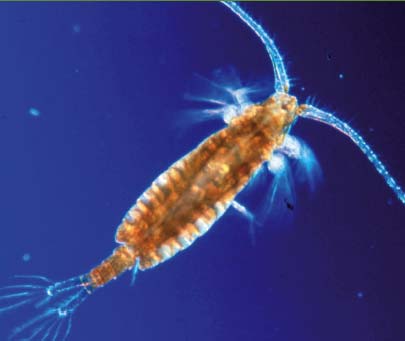
Nutrition
Planktivores

Amphiprion percula, or black finned clownfish, feed on many organisms. They primarily like to feed on zooplankton, like copepods and larval tunicates, because they are planktivores. Planktivore literally means feeding on plankton (Merriam-Webster 2013). That’s not the only organisms they feed on though, they also feed on aquatic crustaceans, algae, and other marine invertebrates (Lee 2003).
How to Feed in an Anemone
The black finned clownfish consumes algae and non-depleted food from its host, the anemone, in areas around the anemone. If our fish obtains a piece of left over food from another predator or any food (Boyer) that is too large to be consumed at the location obtained, it brings it back to the anemone for later. Usually, the anemone consumes the food before our fish gets a chance to enjoy its surplus. This trade-off of the black finned clownfish taking food from the anemone and the anemone eating the food our fish stores in its host is one way how they help each other out in their symbiotic relationship (Lee 2003). For more information on their relationship you can visit our habitat and reproduction pages.
Juvenile Feeding
The juvenile growth rate of the black finned clownfish is under pressure from larger males of the same species because there are so many of them in a small living space (Elliot & Mariscal 2001). The optimal growth rate for these growing fish is about six percent per day measured in body weight. Some individuals don’t reach this rate of growth because they are being chased by larger fish which causes them to burn calories, units of energy, instead of storing them. And also when they are being chased they have no time to feed. So only when larger males aren’t present the smaller Amphiprion percula will be able to grow. Another factor effecting the feeding of these fish is they live and feed off of a coral reef habitat (click on the hyperlink to learn more about their habitat). More and more these habitats are becoming less and less. This is making it more challenging for this juvenile species to obtain food and survive into maturity (Lee 2003).